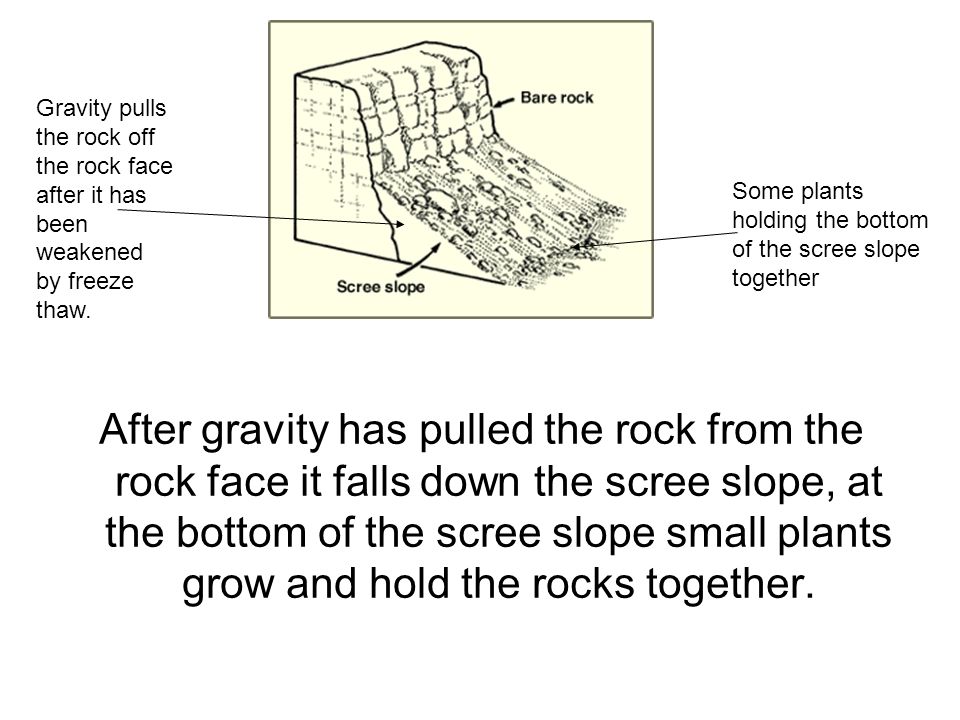This face-shaped rock formation has long been the subject of local legends, which you can read more about here.
From a geological perspective, this mountain demonstrates a talus, or scree pattern.
What is a Scree?
You’ll notice the unique shape of this mountain. A scree is a collection of broken rock fragments at the base of mountain cliffs. These broken rock fragments originated from the bare rock further up the hill. It can signal slope stability issues.
The diagram illustrates these concepts:

What Causes a Scree to Form?
Screes form as a result of a process called weathering. In weathering, rocks near the surface of the earth (at the top of the mountain) disintegrate, and are transported away from their original placement thanks to the eroding forces of wind, water, and ice.
There are two main types of weathering:
- Chemical weathering happens when, due to exposure to certain surface conditions, original materials transform into substances which are different in both physical characteristics and composition. As a result of this change, the ‘newer’ substance is more susceptible to the physical effects of erosion. Some types of rock are more affected by agents of chemical wearing than others.
- Mechanical weathering happens when rocks get broken apart into smaller particles as a result of physical processes. An example of a physical process which causes mechanical weathering is frost. When frost forms on the surface of rock, it significantly increases the volume of the surface. This, in turn, causes increased outward pressure on the rock surface and can result in the breaking of rocks.
Before logging this cache, please send the following answers to the CO (do not include the answers in your log):
1. Describe how the top of Breakfast Mountain looks different from the bottom section of the mountain
2. Describe the appearance of the scree from this vantage point (i.e. scree made up of large or small rocks? Is the scree of equal size all over the mountain? Presence of vegetation?)
3. By what mechanism (type of weathering) do you think the “Old Man” image was formed? What factors led to this conclusion?
A photo of your GPS at the site is always appreciated.
Thanks for visiting!
References
Batterson, M., McCuaig, S., & Taylor, D. (2006). Mapping and assessing risk of geological hazard on the northeast Avalon peninsula and Humber Valley, Newfoundland. Retrieved from http://www.nr.gov.nl.ca/mines%26en/geosurvey/publications/cr2006/batterson.pdf
PC Mode. (n.d.). Talus geology diagram. Retrieved from http://www.pcmode.org/talus-geology-diagram.html
What is weathering? (n.d.). Retrieved from http://imnh.isu.edu/digitalatlas/geo/basics/weathrng.htm